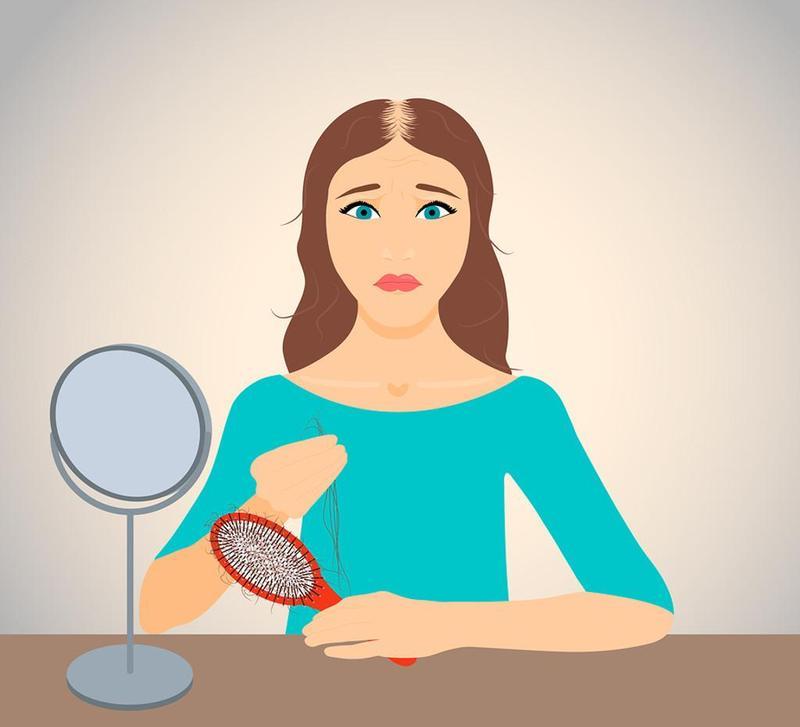Can An Infection Cause Hair Loss?
Can An Infection Cause Hair Loss?

Are you losing your hair? A lot of hair loss is just hair loss. It may be simply male (or female) pattern hair loss.
Sometimes, though, hair loss is a bit different. Sometimes it can be an infection. This is especially a possibility if you’re female and young with a healthy thyroid. It’s not as common, but if it’s the case, there’s good news: It may grow back.
What are the types of infection-related hair loss?
Telogen effluvium
This is a common cause of hair loss. It causes thinning hair all over the head, especially at the top.
The name is a bit different. To break down what it means: Telogen is “Resting phase of hair cycle” and effluvium refers to an “outflow”. Hair goes through different phases of growth and rest. In this disorder, a large number of hairs enter into the resting phase, telogen, at the same time. Hair falls out in this stage, so a large number of hairs will soon fall out. These telogen hairs can be recognized by the small bulb at the root of the hair.
It usually just involves the scalp, but can include other hair. It doesn’t lead to total hair loss, just very noticeable thinning all over the head, but especially at the top.
This hair loss is not directly due to an infection, but is because of the shock associated often due to a shock - such as a high fever from an infection - but also from hormonal changes in a mother with birth.
This can also occur because of emotional stress, some diets, and other nutritional or hormonal changes.
Usually once your body gets over the infection or the other stress, the hair will grow back. Once hair start growing back, there may be lots of small hairs, which can create a fuzzy ring of smaller hair around the head.
Ringworm
Ringworm is a fungal infection of the skin. It is also called Tinea Capitis and is not caused by worms. It starts as a small red dot that expands as a circle surrounded by a ring. It leaves a scaly, itchy, bald patches if untreated.
Anyone can be at risk. The infection can spread from one person’s skin to another. It can be sharing brushes, blades for shaving hair, towels, hats and other items. Infections may be caught in shared public showers.
Those more at risk are those who have minor scalp injuries, who do no wash their hair often, or have damp hair (such as from sweating) for a prolonged time.
It can also spread from your dog or cat, if they are infected. Wash your hands with soap and water if you’ve touched your pet and suspect it has ringworm. Your vet can treat the pet.
Your doctor can help you treat this with drugs for fungal infections. It is a treatable infection.
Folliculitis
Folliculitis is like acne of your hair follicles. It can be itchy and a bit painful in particular spots, especially when follicles become clogged with sweat or bacteria.
The problem can be temporary or can go away with treatment. If folliculitis is allowed to progress, it can lead to permanent scarring and hair will not grow back in these spots.
It occurs as the follicles at the base of your hair become inflamed. This can be because of a non-infectious problem. It can also be caused by infections, like common bacteria. These include Staph Aureus like MRSA. It can also include Hot Tub folliculitis, which is caused by Pseudomonas, and which is treated by different antibiotics, if antibiotics are needed.
You can talk to your doctor about treating Antibiotic creams that can be spread over affected areas and bought over the counter. There are also antibiotic pills that can be taken if needed.
Piedra
Piedra is another type of fungal infection (Trichosporon) that causes nodules around the hair follicule (that are either white or black). It can lead to diffuse patchy hair loss.
Syphilis
The second stage of syphilis can include patchy hair loss. It usually occurs 4-10 weeks after exposure. This stage can involve a rash over much of the body (including palms) as well as fever, lymph node swelling, tiredness, muscle aches, and other symptoms.
Other infections
There may be additional infections that can be involved. Some worry that some mites (Demodex folliculorum) or other infectious agents may be related to some types of hair loss. Likewise, Seborrheic dermatitis is a chronic condition that can lead to hair loss. It is not in itself an infection, but it often can involves infections and flares with Malassezia infection. It leads to flaky white-yellow scales that lead to oily areas. (It is the same as cradle cap in infants).
by Megan Coffee For Very Well
Be the first to post a message!